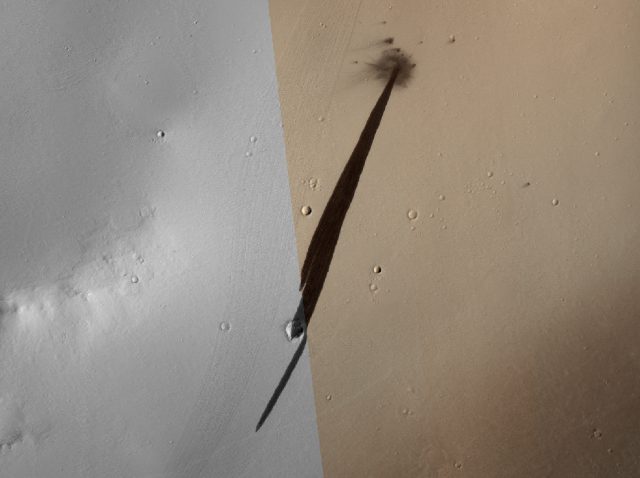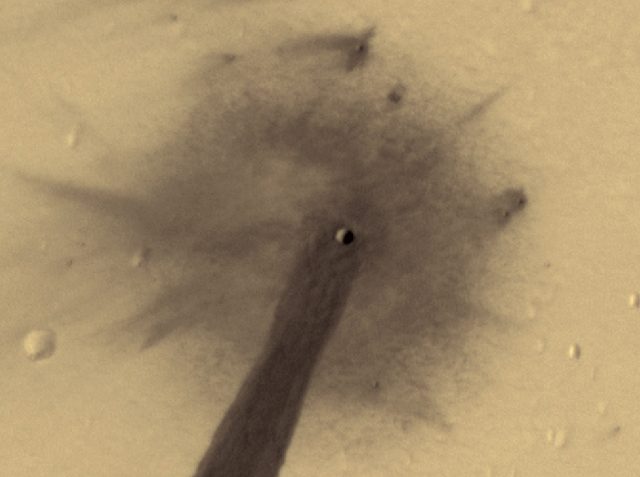19 June 2018
Mars: a landslide triggered by a small meteoroid impact
Posted by Dave Petley
Mars: a landslide triggered by a small meteoroid impact
The University of Arizona has released a really interesting image of the aftermath of a meteoroid impact on Mars that triggered a comparatively long run out landslide:-

HiRISE image of a meteoroid impact crater on Mars, with its associated landslide deposit. Image via the University of Arizona.
.
The imagery was captured by the HiRISE instrument. The impact event is thought to have occurred about a decade ago. The meteoroid has created a crater with a diameter of about 5 m, and a more substantial impact debris field. The landslide appears to have initiated very close to the crater, but the crater itself remains intact:-

HiRISE image of the debris and landforms from the Mars impact event, and the associated landslide source. Image via the University of Arizona.
.
There is a good write-up of this in Universe Today:
In that time, the MRO has acted as a relay for other missions to send information back to Earth and provided a wealth of information of its own on the Red Planet. Most recently, it captured an image of an impact crater that caused a landslide, which left a long, dark streak along the crater wall. Such streaks are created when dry dust collapses down the edge of a Martian hill, leaving behind dark swaths.
In this respect, these avalanches are not unlike Recurring Slope Lineae (RSL), where seasonal dark streaks appear along slopes during warmer days on Mars. These are believed to be caused by either salt water flows or dry dust grains falling naturally. In this case, however, the dry dust on the slope was destabilized by the meteor’s impact, which exposed darker material beneath.
The impact that created the crater is believed to have happened about ten years ago. And while the crater itself (shown above) is only 5 meters (16.4 feet) across, the streak it resulted in is 1 kilometer (0.62 mi) long! The image also captured the faded scar of an old avalanche, which is visible to the side of the new dark streak.
In terms of morphology, this landslide is reminiscent of the rock avalanches flowing across ice, such as this example from Alaska:

The Lamplugh Glacier rock avalanche via Paul Swanstrom.
.
It even has the distinctive digitate lobe structure seen at the toe of the landslide. The wonderful Mount Dixon rock avalanche video suggested that this structure can be formed by slow creep at the end of the main movement period.


 Dave Petley is the Vice-Chancellor of the University of Hull in the United Kingdom. His blog provides commentary and analysis of landslide events occurring worldwide, including the landslides themselves, latest research, and conferences and meetings.
Dave Petley is the Vice-Chancellor of the University of Hull in the United Kingdom. His blog provides commentary and analysis of landslide events occurring worldwide, including the landslides themselves, latest research, and conferences and meetings.